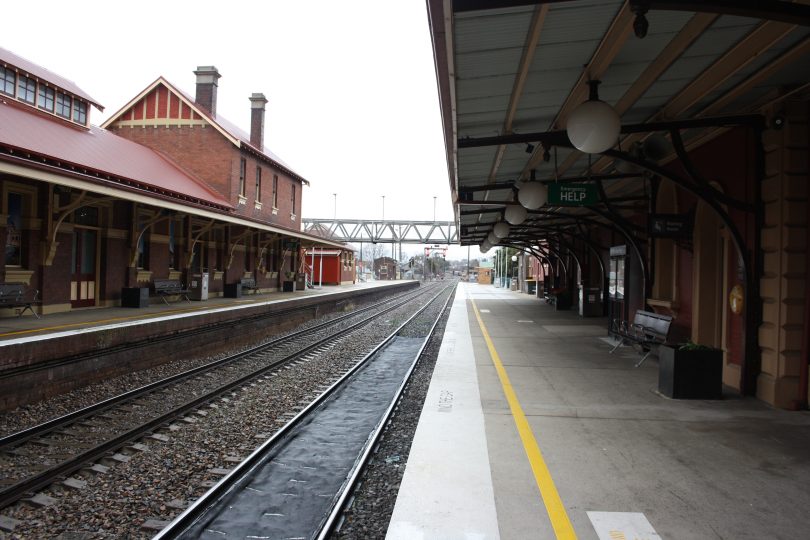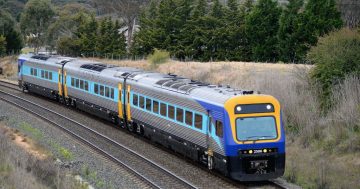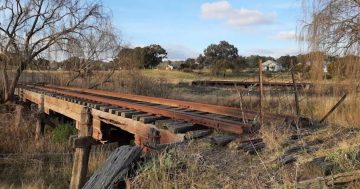
Southern Tablelands Rail Users Group President Greg Price is advocating for tilt train technology which is widely used in Europe. Photo: Supplied.
Around 18% of people living in the Goulburn-Mulwaree region travel outside of the area to work, and with an increasing population rail commuter links to Sydney and Canberra are on the agenda in the lead up to the NSW election in March 2019.
However, it’s not the first time the inadequacies of country rail infrastructure and the Goulburn rail timetable have come into sharp focus, demonstrating decades of unsuccessful lobbying for better commuter services to metropolitan areas.
According to Southern Tablelands Rail Users Group (STRUG) President Greg Price, the current rail timetable is “about as slow as steam train timetables, and the timetable now is 12 minutes slower than the previous timetable which was replaced in November 2017”.
“Ageing diesel trains, unreliability due to passenger services being held up by broken down freight trains, and lack of investment over decades in rail infrastructure, have contributed to poor services”, Greg said.
While Australia may be a ‘nation of car drivers’, increased population along the Sydney to Canberra corridor, and long car commute times due to road congestion in metropolitan areas, have highlighted rail timetable deficiencies.
“If we can have a rail timetable of three hours or less between Canberra and Sydney, we’ll take a significant number of passengers off the airlines. With no check-in times, and the opportunity to work on your laptop, and a journey which delivers you to the centre of Sydney, rail travel becomes attractive. The Sydney to Canberra corridor is the only regional corridor capable of generating a profit,” Greg said.
The answer, according to STRUG, is to invest in tilt train technology and electrification of the current lines. It’s a campaign STRUG has been pushing since 2014, and which had the support of local councils along the corridor between Sydney and Canberra.
“The councils understand that fast and frequent electric train services offer better residential and commercial growth opportunities for their local government areas,” Greg said.
The group is lobbying the NSW Government to fund a feasibility study into tilt trains, which it first raised in 2014. With the State Government recently concluding a tender process to replace the ageing diesel trains servicing the Sydney to Canberra corridor, now is the time to examine tilt train technology, even if the trains were diesel powered.
“Even the diesel tilt trains without any alterations to the tracks should be able to do the trip between Sydney and Canberra in around two hours fifty minutes. If the NSW Government doesn’t invest now in this technology, it will be the middle of the century before we get another chance – given the trains have around a 30-year lifespan,” Greg said.

With investment in faster rail times, the Canberra to Sydney rail corridor can attract passengers, taking them off the airlines in favour of rail travel.
“Tilt trains are the only way that an immediate reduction in travel times can be gained. It may be slightly more expensive technology but if you don’t invest in tilt trains you are again buying 1980s train technology.”
While the Goulburn region didn’t score anything specific in the recent NSW Government budget for rail travel, the government is looking at ways to improve the rail travel between Sydney and Canberra.
CSU Associate Professor Ian Gray who’s research has focused on the link between rail services, regional development and social issues, believes a train service that is attractive to commuters can make a big difference to communities which may be disadvantaged due to access to employment, health and other services when compared with metropolitan residents. Smaller towns and villages along the line can also benefit, as well as larger population centres.
“When frequencies are raised, the smaller places can be served too by allowing maybe one train a day, each way, to stop at these stations,” Associate Professor Gray said.
With coach services replacing some rail services in country NSW, commuters haven’t always been advantaged by efficient timetables.
“From a commuting angle, buses can be very slow,” he said.
“However, the NSW Government has recently started some regional coach services which are quite innovative in that they are aimed at connecting regional centres with other regional centres, not just providing access to train services to and from Sydney.
“Needless to say, a train service with a commuter timetable, not a timetable like the XPTs which suits an interstate service, would be quite different and, I think, more attractive.”
In the meantime, STRUG is continuing to take up the baton for an efficient commuter service from Goulburn at least.
“We need a rail service like the one Newcastle has,” Greg said.
#This article first appeared on RiotACT





